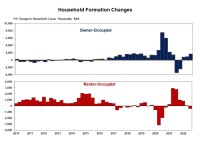RISMEDIA, October 5, 2009—The latest chapter in the mortgage meltdown is being written in court, as one by one, judges are putting a halt to foreclosures. The latest was a recent Kansas Supreme Court case.
In Landmark National Bank v. Kesler, the court held that a nominee company called MERS had no standing to bring a foreclosure action.
Nor was Kansas the first. In August 2008, Federal Judge for the U.S. Bankruptcy Court for the District of Nevada ruled MERS had no standing. ”Indeed, the evidence is to the contrary, the Note has been sold, and the named nominee no longer has any interest in the Note.”
In September of 2008, A California Judge ruling against MERS concluded, “There is no evidence before the court as to who is the present owner of the Note. The holder of the Note must join in the motion.”
On March 19, 2009, the Supreme Court of Arkansas determined that MERS was not the true beneficiary because the Note had been sold. Alabama and Florida have made similar rulings.
In each case, the reason stems from a fundamental misstep in the handling of Notes and Trust Deeds that runs contrary to established court policies which require that the real parties identify themselves to the court. Each of these cases involved MERS and, in each case, the courts’ rationales were almost identical.
First, a little background. Over the last 40 years, mortgage lending has evolved from a bank holding the mortgage to the mortgage being bundled and sold as part of an investment pool, usually in the form of a bond.
As a registered security, the Note is a negotiable instrument, like money or a cashier’s check, and under securities law that Note must be given to the investor. In this case, mortgage backed securities, (MBS) were bundled together in a pool and shipped to…well, we don’t really know.
One of the impediments to an MBS is the need to file assignments for the beneficiaries in each county each time the mortgage is resold. And apparently, no one holds them for very long because most have been passed around several times.
In order to avoid the logistical nightmare of trying to maintain a public chain of title, the biggest lenders joined MERS, Mortgage Electronic Registration Systems, Inc.
MERS was created with the sole intent of evading the recording fees due to the county in which the security is located.
In so doing, in my opinion, they also destroyed the age-old practice of making a public record of information concerning real property in general, and legal interest specifically. The chain of title is a vital record produced to resolve many a dispute.
Now, that’s gone. I believe, erased simply so they themselves, MERS, could siphon off the recording fees for themselves. They sold their business model to lenders as a better way to track mortgages that were being sold and resold all over the world.
But, as there often is with a BIG IDEA, there were also unintended consequences. Only now are they coming to light. Until MERS was challenged in a foreclosure proceeding, no one had taken a look at the law.
The law, according to a Nevada Judge, is that for purposes of foreclosure, both the Note and the Deed of Trust must be assigned. When the Note is split from the Deed of Trust, the Note becomes unsecured. A person holding only a Note lacks the power to foreclose because it lacks the security.
MERS lost track of the Notes. In some cases, according to my research, they deliberately destroyed them.
Every thing was fine until the economy contracted. MERS began foreclosing on delinquent home loans and then one day; someone said “show me the Note.”
In reviewing the judge’s rulings in the above matters, several key points have been determined:
• MERS is not the beneficiary of the Notes and has no skin in the game. It did not lend any money, collect any payments or do anything more than track the sale of the securities.
• Judicial procedure requires that parties identify themselves and prove their standing.
• Splitting the Note and Trust Deed leaves no party with standing to foreclose. The true holder of the Note, the security, paid the lender so the lender is covered. The true holder of the Note was insured by AIG so they are covered. AIG and the banks were bailed out by taxpayers. So, unless the American tax payer can produce a “blue-ink” original Note, no one has standing to foreclose.
• Allowing a foreclosure to proceed without the original Note places the homeowner in double jeopardy. If the original Note were to surface, the holder of the Note would be entitled to payment, but from whom? The borrower is still on the hook.










